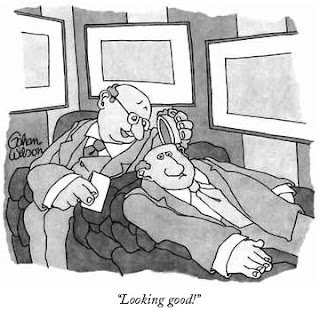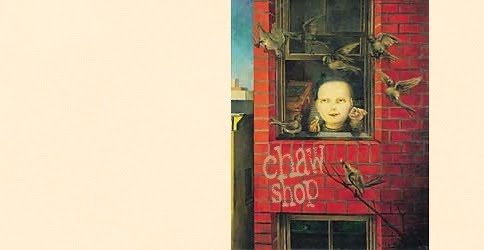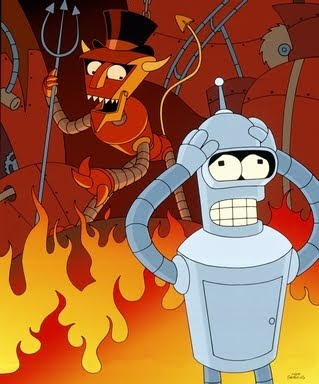For those reasons, I have never agreed with Henry James's asinine generalization, "Tell a dream, lose a reader," nor with the more commonly held opinion that dreams stall the action of narrative, that they hold characters in artificial stasis. To know a character's dreams is, in my opinion anyway, to know that character's humanity; it provides the same intimacy as witnessing his birth or death or the intricacies of his sexuality. In fiction, details have to be carefully chosen, whether they're the contents of a wallet or the tchotchkes on a shelf, but although those details may work on a metaphorical level toward developing the protagonist or themes, they also have to operate impersonally, causally, in accordance with the laws of the story's world. In depicting a dream, though, that causality itself functions as metaphor. Objects shift, transform, appear, disappear in ways that mirror the character's psychology; there are no accidents, no rote necessities. Everything means something. In this sense, I think that, only in a dreamscape (or a landscape that functions like one, as in Kazuo Ishiguro's masterpiece The Unconsoled or the films of David Lynch) can plot itself aspire to the lyric condition of poetry.
The Christopher Nolan film Inception does not aspire to the lyric condition of poetry. Inception aspires to the condition of the summer blockbuster, specifically of the whiz-bang variety; it aspires to pack in as many twists and turns and explosions and car crashes, gun-toting extras and special effects, as is legally possible to cram into a PG-13 two and a half hour extravaganza. Like Space Mountain, it is a hell of a ride, and if you can get through it once without throwing up, you may find yourself tempted to get back in line and go again, because it leaves you so exhilarated and refreshed.
These are accomplishments, huge ones, and they're even more impressive when you consider all the seemingly obligatory things the picture doesn't do. Inception is a movie where, in the course of the present action, no one dies or gets laid; it's a heist movie where nothing gets stolen. The characters are ciphers, with hardly a defining characteristic among them – there's a single memorable beat of romance/comic relief, when Joseph Gordon-Levitt cons Ellen Page into a kiss, but other than that the characters are little more than attractive mouthpieces for hefty chunks of technical sci-fi exposition. Yet the story moves: there's always a ticking clock or a ticking bomb, a bullet to dodge, or – in the most literal sense of the word "suspense" – a white van hanging off the side of a bridge, falling in slow, slow motion to the chilly waters below.
It feels silly even to bother pointing out that this film is overcomplicated to the point of absurdity: "Whose subconscious are we going into now?" Ellen Page asks at one point, in a line of dialogue that I suspect was taken verbatim from a confused reader's marginalia on the screenplay. It feels silly, too, to point out the overdetermined Freudian arc of the dream narrative. For the five of you in America who still haven't seen this movie, Leo & Co. are tasked with implanting an idea in a young CEO's mind: they need him to dismantle the energy company he recently inherited from his dad. I WILL BREAK UP MY FATHER'S EMPIRE, Leo pens on a whiteboard during a strategy meeting of the mind-invasion team. "The most powerful ideas have emotional meaning," he explains to those assembled. "But how do we turn a business plan into an emotion?" a clueless flunky asks. I guess for this guy, a cigar is just a cigar.

But, although I did find moments in the film unintentionally funny, that wasn't why I was so disappointed in Inception. For me, the biggest let-down here was the simple fact that the dreams did not remotely resemble dreams. As I said before, dream worlds in fiction are fascinating to me, not simply because they can be fantastical, imaginative, wondrous, and strange (though those things can come as additional perks). What makes dream worlds fascinating is the fact that everything within them is the construction of a particular idiosyncratic human mind. If I recall correctly, Freud believed that the raw material of dreams came entirely from objects and images the dreamer had encountered in life; dreams were in this sense vast collages filled with items that never entirely relinquished their initial significance, a whole world hued with nostalgia. Inception takes this idea one step further: since the agents access the dream state consciously, they can build within it consciously too, creating impossible architectures and landscapes that defy the laws of physics at the speed of thought. But given this freedom, what do they create? The sets from the Bourne Identity movies, apparently, and, in the case of Leo and his wife Mal, an empty city of repetitive fascist architecture, with one or two replicas of their former homes at the outskirts.
This looks boring, sure, and it tells us zilch about the characters, but the problem is bigger than that. By showing us dreams but refusing to let them convey any information through suggestion or metaphor, Nolan is devaluing the whole visual aspect of his very visual medium. He's saying, "You don't need to watch; you just need to listen, and everything will be completely explained." And by encouraging this kind of passivity, this inattention, in the viewer, he's drawing attention away from the very qualities that could meaningfully distinguish his work from that of his contemporaries. Like the dream-architects here, Nolan could've made this look like anything in his imagination – he could have made this personal, haunting, zany, or gorgeous. But except for one or two amazing moments (as when a vast gray city folds in over itself like a piece of curling linoleum, or a very old Ken Watanabe eats porridge in a room with a thousand hanging lanterns), he chose to make this world look like any random thriller at the multiplex. Perhaps making us believe the third-act twist, about fantasy and reality being indistinguishable, was more important to him than creating a visually arresting film. But even with that twist in mind, I'd encourage Nolan to take a look around the world outside the shooting set sometime. The Earth can be a pretty weird place. That's why it gives us such bad dreams.



